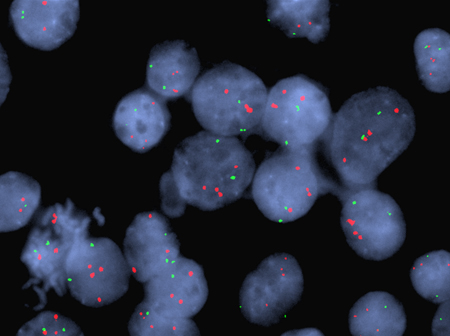背景:直接编辑对致病突变的修正在遗传疾病的治疗方面具有很大的吸引力。如果该方法在实践上能克服诸多障碍的话,一个研究方向将专注于开发“锌指核酸酶”(ZFN)。技术路线是将设计的“锌指DNA-结合区域”融合到核酸内切酶上,进而在培养的细胞中诱导高效的基因修正。
结论:Li等人报告,“锌指核酸酶”能够在基因组上特定位置诱导双链断裂,并且在活体中还能以具有临床意义的刺激基因组编辑。研究人员成功地进行一次基因修正实验,将“锌指核酸酶”输送到血友病模型的B小鼠肝脏中,基因替换水平足以修正凝血缺陷,而且在肝脏再生之后该效应仍存在。

成功修正凝血缺陷的“锌指核酸酶”技术
生物探索推荐英文摘要
In vivo genome editing restores haemostasis in a mouse model of haemophilia
Abstract:Editing of the human genome to correct disease-causing mutations is a promising approach for the treatment of genetic disorders. Genome editing improves on simple gene-replacement strategies by effecting in situ correction of a mutant gene, thus restoring normal gene function under the control of endogenous regulatory elements and reducing risks associated with random insertion into the genome. Gene-specific targeting has historically been limited to mouse embryonic stem cells. The development of zinc finger nucleases (ZFNs) has permitted efficient genome editing in transformed and primary cells that were previously thought to be intractable to such genetic manipulation1. In vitro, ZFNs have been shown to promote efficient genome editing via homology-directed repair by inducing a site-specific double-strand break (DSB) at a target locus2, 3, 4, but it is unclear whether ZFNs can induce DSBs and stimulate genome editing at a clinically meaningful level in vivo. Here we show that ZFNs are able to induce DSBs efficiently when delivered directly to mouse liver and that, when co-delivered with an appropriately designed gene-targeting vector, they can stimulate gene replacement through both homology-directed and homology-independent targeted gene insertion at the ZFN-specified locus. The level of gene targeting achieved was sufficient to correct the prolonged clotting times in a mouse model of haemophilia B, and remained persistent after induced liver regeneration. Thus, ZFN-driven gene correction can be achieved in vivo, raising the possibility of genome editing as a viable strategy for the treatment of genetic disease.







